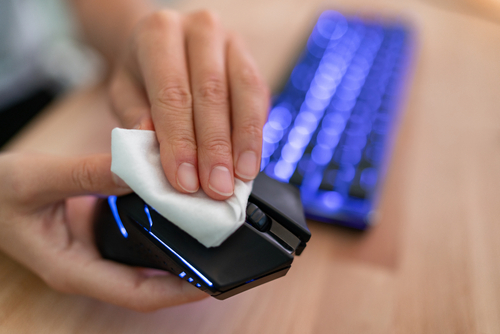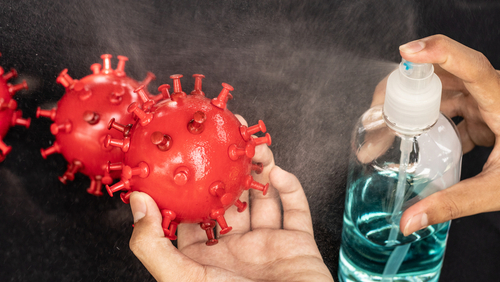
How to Apply Self Disinfectant Coating?
September 28, 2020
How Does Antimicrobial Coating Work?
October 16, 2020Why Choose Us as Your Self Disinfecting Coating Provider

Why choose us as your self disinfecting coating provider? No matter how clean we keep our homes, offices, and facilities, we every day come into contact with germs. Germs can be anything from pathogenic bacteria to viruses that cause illness.
Every surface we touch in a public place is more likely to have these germs. Some are harmless, but the majority of them are not.
Pathogenic bacteria, such as E.coli, Salmonella, Mycobacterium, Legionella, and Staphylococcus (Staph), are known to cause different severe illnesses.
One of the main ways we contract some of these pathogenic microorganisms is via touching surfaces that are inefficiently cleaned and disinfected regularly.
The outbreak of COVID-19 in late 2019 has changed our way of life. This newly discovered virus is causing a deadly disease that has claimed the lives of hundreds of thousands of humans from different parts of the world.
The virus is highly contagious and has an extremely high propensity to spread to a large number of peoples in a short period. In response to the outbreak of this deadly virus and its rapid spread, researchers were quick to determine ways it spreads from one person to the other.
How does COVID-19 spread?

According to the World Health Organization (WHO), coronavirus primarily spreads from person to person via the droplets that an infected person releases when sneezing or coughing.
The virus can also spread by close contact with the infected person when you shake hands or hug. You can also get COVID-19 when you touch surfaces and objects that have already been contaminated by an infected person.
How to reduce the spread of COVID-19

Knowing how the virus is spreading from person to person has made different governments employ strict measures such as lockdowns, curfews, and cessation of movements.
Researchers are encouraging people to stay at home, maintain physical distancing, wear masks, wash their hands regularly, and clean and disinfect the most-touched surfaces.
The strict restrictions to combat the spread of the virus has changed our way of life. Schools, worship centers, businesses, and other public places in many countries have been closed for some months now. Many people are also losing their jobs every day.
The rate of poverty is increasing, and many people are not able to feed their families.
In response to the fast-growing rate of poverty, governments are now easing their restrictions. Some countries have allowed people to go back to their lives, but with some precautions.
Cleaning and disinfecting the most-touched surfaces, such as doorknobs, has turned out to be the most effective way to combat the spread of the COVID-19. Cleaning with detergents is not enough to kill the virus.
Cleaning reduces the number of the virus on the surface. Disinfecting or fumigating surfaces after cleaning is the most effective way to reduce the spread of the virus via indirect contact.
How long does the Coronavirus live in surfaces

Knowing how long the coronaviruses live on different surfaces can help you determine the best cleaning and disinfection routine. Studies have shown that the virus can live on the most-touched surfaces from a few hours to some days.
Here is how long the Coronavirus can live on different surfaces:
- Metal (doorknobs) – 5 days
- Paper (magazines, dollar notes, and newspapers) – up to 5 days
- Glass (windows, mirrors, and drinking glasses) – up to 5 days
- Wood (furniture and decking) – 4 days
- Plastic (elevator buttons and bus seats) – 2 to 3 days
- Aluminum (water bottles and soda cans) 2 to 3 days
- Stainless steel (sinks) – 2 to 3 days
Why scientists are recommending self disinfecting coating

Routine cleaning and disinfection are not only costly but also ineffective since most of the cleaning guys you hire don’t know how to do it well. You can’t manage to clean and disinfect doorknobs and other most-touched surfaces and objects every time a person touches them.
But what is the solution for this?
During the coronavirus outbreak, many people have been using their keys and other objects to poke lift buttons. The main reason for this is because everyone knows that traditional disinfection methods are short-lived. The self disinfecting coating has come to your rescue.
Why Choose Us as Your Self Disinfecting Coating Provider – Conclusion
The coating kills all the viruses, bacteria, and fungi upon contact. With a self disinfecting coating on your doorknobs, lift buttons, and other most-touched surfaces, you don’t have to worry when touching them for the next 90 days.
What makes self disinfecting coating much better is the fact that it is safe for the human skin and isn’t affected by cleaning and scratching.




